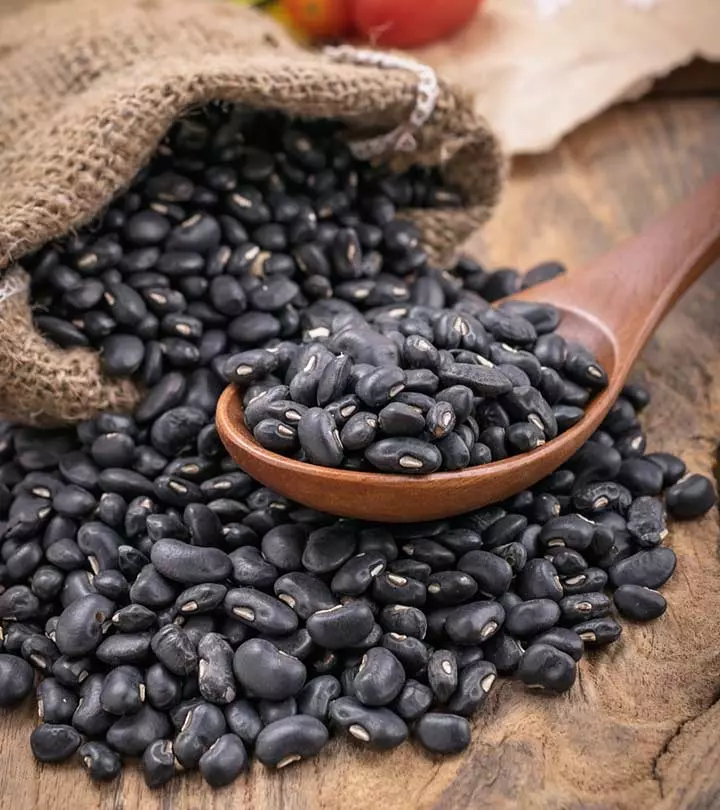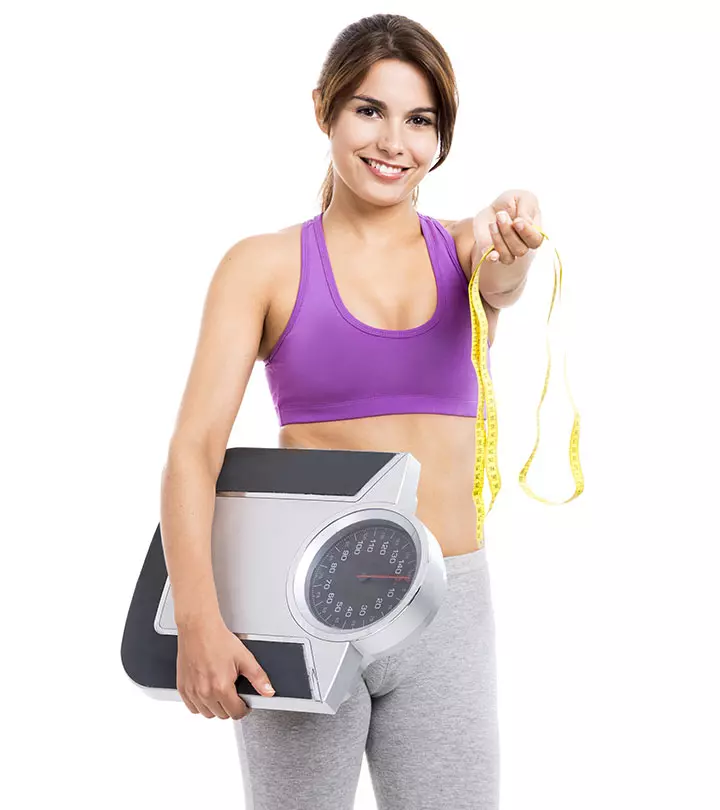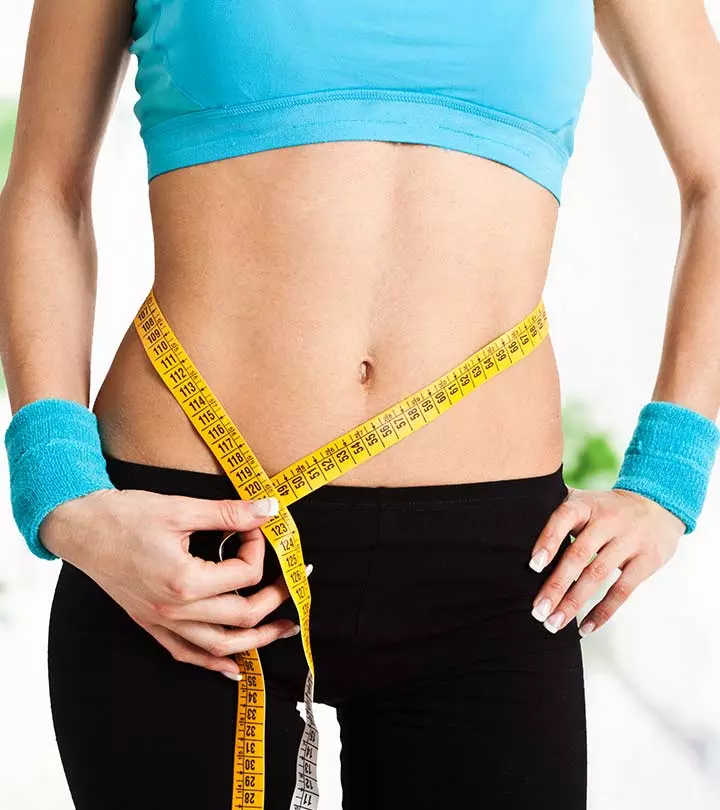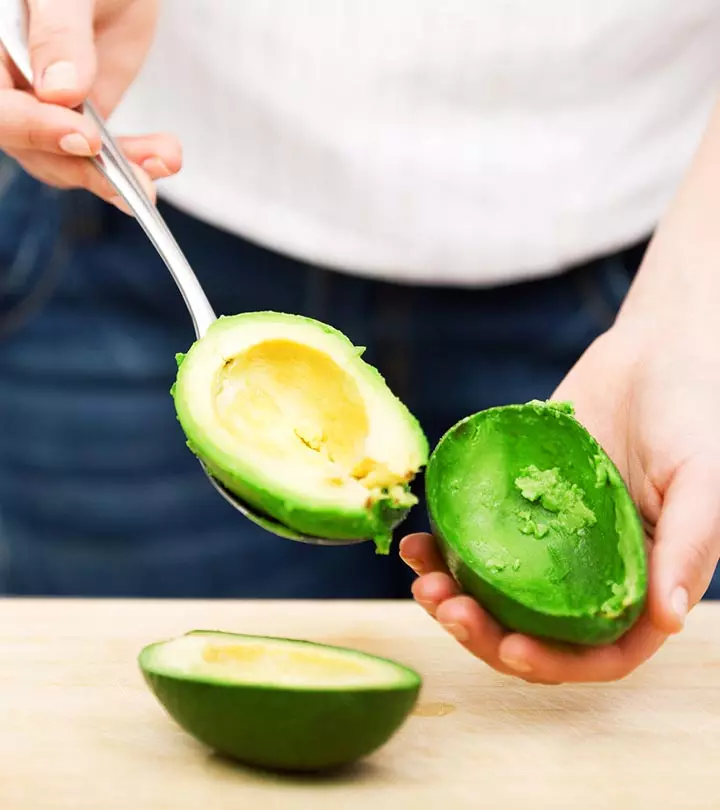Horse Gram For Weight Loss – Benefits And Recipes
Exciting ways to include this nutrition powerhouse in your diet and reap its many benefits

Image: Shutterstock
If you have weight loss in your plan, we can help. Try consuming protein-rich horse grams for weight loss. It is a healthy and nutritious alternative to protein powders (1). Horse gram is a lentil or bean used as an alternative or folk medicine for treating cold, cough, kidney stones, asthma, and menstrual irregularity (2). Therefore, adding horse gram to your diet will not only aid weight loss but also prevent and treat many health issues. This post discusses how horse gram aids weight loss and a few delicious recipes you can consume for best results. Scroll down for all the details.
In This Article
Horse Gram Nutritional Value
Horse gram, a versatile legume commonly found in India, is loaded with nutrients and is an excellent source of protein. It is considered one of the most nutritious legumes and can be a valuable addition to a balanced diet. Check out the nutrient content of this legume in the table below (3):
| Nutrient | Amount (Per 100g) |
|---|---|
| Calories | 321 Kcal |
| Protein | 22 grams |
| Fiber | 8 grams |
| Fat | 0.5 grams |
| Iron | 6.77 mg |
| Calcium | 287 mg |
| Phosphorus | 311 mg |
| Magnesium | 311 mg |
| Thiamine | 0.4 mg |
| Riboflavin | 0.2 mg |
| Niacin | 1.5 mg |
It is a versatile ingredient used in various culinary preparations and may also help with weight management. Check out how it may aid weight loss in the section below.
Key Takeaways
- The high protein and fiber content in horse gram beans may help improve satiety and reduce excess calorie intake.
- Adding horse gram to your daily diet may also help clean your digestive system and colon due to high amounts of soluble and insoluble fiber.
- The essential amino acids in the beans may also help boost your metabolism and help you burn more calories.
- You can add horse gram to your diet by combining it with cooling food options like juices and buttermilk.
How Horse Gram Works For Weight Loss
Horse gram is loaded with protein, dietary fiber, vitamins, and minerals and is low in calories (3). This makes it an amazing food for weight loss. Here’s why you should consume it for weight loss:
1. High In Protein
The amino acids albumin and globulin contribute about 75-79% of total horse gram content. Moreover, methioninei and tryptophani are found in limited quantities in this legume (2), (3).
The amino acids albumin and globulin contributes about 75-79% of total horse gram content. Moreover, methioninei A kind of amino acid compound that blocks fat storage and efficiently removes toxins from the liver. and tryptophani A low appetite suppressant that increases the serotonin level in the human body and aids the sleep cycle. are found in limited quantities in this legume (2), (3).
The amino acid profile of protein-rich foods boosts the metabolic rate, helps regulate satiety levels, and increases energy expenditure in negative energy balance (4). Increased satiety reduces unnecessary energy intake (i.e., you eat less), which is important for weight loss (5).
2. Loaded With Dietary Fiber
100 g of horse gram contains 8 g of fiber (3). Dietary fiber increases satiety and decreases the absorption of fat molecules by binding them (6).
A study conducted in Canada found that people who consume beans have lower body weight and waist circumference and better nutrient intake (7).
A pilot study conducted on 20 people found that a bean-based high-fiber diet increases fiber intake by 75%,which increases satiety and reduces hunger to aid weight loss (8).
3. Low In Calories
Horse gram is low in calories, so it can be taken in an adequate amount to curb your hunger (3).
As per the Canadian Medical Association Journal, a low-calorie diet can help reduce abdominal fat and waist circumference by 1.5-9.5 cm as it aids fat burning (9).
4. Removes Toxins
The soluble and insoluble fiber found in horse gram helps in digestion and the colon. The insoluble fiber increases stool weight and decreases the transit time (10), (11).
A study conducted at the Seoul National University (South Korea)found that people who are on a detoxification diet plan that includes legumes, nuts, fish, and whole grains in their daily diet experience weight loss and reductions in other body composition measurements like body fat percentage, body fat mass, and waist circumference (12).
5. Improves Metabolism
Horse gram is rich in protein along with all the essential amino acids (3).
Protein-rich foods not only increase satiety but also help boost metabolism. A high-protein diet helps maintain the basal metabolic rate, which helps in reducing weight (13).
Now that you know how horse gram helps reduce weight, let’s check out how you can consume it.
How To Consume Horse Gram
Horse gram is a heat-generating legume, so it is best to combine it with cooling foods like cumin powder, juices, and buttermilk.
A study conducted at the Banaras Hindu University (India)found that horse gram seeds with spices are used as a remedy for cold, sore throat, and fever as they generate heat (2).
A blogger shared that she followed the South Beach diet to shed her pregnancy and post-pregnancy weight and horse gram was an integral part of its first phase. She states in one of her blog posts, “Before the diet, I used to use horse gram once in 6 months or so. But now I started to use them more. So for convenience, I sprout them in bulk and freeze it (i).” The blogger mentioned that you can use them to prepare soup and curry.
You can use horse gram to make a variety of Indian recipes by soaking the seeds for 1-2 hours or sprouting it and using it in a salad. Check out some delicious horse gram recipes for weight loss in the next section.
Horse Gram Recipes For Weight Loss
1. Horse Gram Powder

Ingredients
- 1 cup horse gram seeds
- 1 tablespoon cumin seeds
- 4 tablespoons split pigeon peas
- 4 tablespoons split black gram
- 10 dry red chilies
- 1 teaspoon black peppercorn
- Salt to taste
How To Prepare
- Dry roast the horse gram until the raw aroma is gone.
- Dry roast the split pigeon peas and split black gram until they change color.
- Dry roast all the other ingredients and let them cool down.
- Blend them into a coarse powder.
- Add the powder to hot rice and consume it to lose weight.
Best Time To Consume
Lunchtime
2. Horse Gram (Kollu) Soup

Ingredients
- 1 cup horse gram
- 1 teaspoon mustard seeds
- 1 tablespoon tamarind juice
- 5-7 curry leaves
- 1 green chili
- 1 teaspoon cumin seeds
- 1 dry red chili
- 1 tablespoon olive oil
- Salt to taste
How To Prepare
- Soak the horse gram overnight in two cups of water.
- In the morning, boil it in the same water. Discard the water once the horse gram is cooked.
- Heat the oil in a pot and add the mustard seeds, cumin seeds, curry leaves, dry red chili, and tamarind juice.
- When it starts boiling, add a cup of water, salt, and green chili.
- Let it boil for 5 minutes, then add the cooked horse gram.
- Let it boil until it starts to foam.
 Quick Tip
Quick TipBest Time To Consume
Post-lunch or pre-dinner
3. Sprouted Horse Gram

Ingredients
- ½ cup horse gram
- 2 cups water
- ¼ cup chopped onion
- ¼ cup chopped tomato
- ½ cucumber, chopped
- 2 tablespoons lime juice
- Salt to taste
How To Prepare
- Soak the horse gram in a cup of water overnight.
- In the morning, discard the water and refill the container with a cup of water. Keep it in the fridge.
- By evening or the next morning, the horse gram will start sprouting.
- Add chopped onion, tomato, cucumber, lime juice, and salt and eat it!
Best Time To Consume
Breakfast or as a snack.
5. Horse Gram Dal

Ingredients
- ½ cup horse gram, boiled
- ¼ cup chopped onion
- ¼ cup chopped tomato
- 1 teaspoon cumin seeds
- 1 clove of garlic, chopped
- ½ teaspoon coriander powder
- ½ teaspoon turmeric powder
- ½ teaspoon chili powder
- 1 teaspoon cumin powder
- 2 tablespoons ghee/olive oil
- 1 dry red chili
- A pinch of garam masala
- Chopped cilantro
- Salt to taste
How To Prepare
- Heat the oil/ghee in a pan.
- Add the chopped garlic and cumin seeds. Cook for a minute.
- Add the chopped onions and cook for 2 minutes.
- Add the chopped tomatoes, cumin powder, coriander powder, turmeric powder, chili powder, and salt. Cook until the oil starts to separate.
- Add the boiled the horse gram and mix well.
- Add half a cup of water and let it cook for 5 minutes.
- Sprinkle a pinch of garam masala and garnish with cilantro.
Best Time To Consume
Lunch or dinner
Besides aiding weight loss, horse gram offers a bunch of other health benefits, such as maintaining heart health, providing stamina, and in having a good immune system . Check out below to know more.
Other Health Benefits Of Consuming Horse Gram
- Studies have shown that the consumption of horse gram helps to manage diabetes (14). Moreover, horse gram is rich in fiber, which helps reduce the fasting blood glucose level and keeps a check on the HbA1C level (15), (16). And because of its slow rate of starch digestion, it can be used as a low glycemic index (GI) diet and can help with blood sugar control.
- Horse gram consumption helps control your cholesterol levels by binding the fat molecules and increasing fecal excretion (14).
- Horse gram produces heat in the body, which is helpful for people who regularly catch a cold, cough, or fever (2).
- Consumption of horse gram helps prevent constipation due to its high-fiber content (10), (11).
 Did You Know?
Did You Know?You must also be aware of the potential side effects of horse gram before you add it to your daily diet.
Side Effects Of Horse Gram

- May aggravate stomach ulcers.
- May cause excessive menstrual bleeding.
Though horse gram is good for your health, it should be avoided in certain situations as it generates heat in the body and is high in protein. Much anecdotal evidence suggests that horse gram may interact with several medications, including antidiabetic drugs, and cause hypoglycemia when used with them.
 Trivia
TriviaWho Should Avoid Consuming Horse Gram
You should avoid consuming horse gram if you are:
- Pregnant
- Lactating
- Suffering from gout
Horse gram contains goitrogen, making it unsuitable for people with thyroid disorders. If you do not belong to the above-mentioned groups of people, you can much on horse gram occasionally and enjoy the protein-packed pulse. To make it a part of your regular diet, you will need to know how to store it properly. Scroll down to learn more.
How To Choose And Store Horse Gram
Look for clean, shiny, plump seeds when selecting horse gram; steer clear of any that are discolored, shriveled, or show mold or other damage. Fresh horse gram should smell nutty; if it does not smell well, it can be moldy. To avoid chemicals and pesticides, always buy organic horse gram from reliable suppliers, especially in sealed packets. Store these horse grams in an airtight container in a cool, dry place to preserve its freshness. For longer-term storage, consider freezing or chilling.
Infographic: 5 Ways Horse Gram May Aid Weight Loss
Horse gram is a type of legume that contains high amounts of protein and fiber. As a result, it can boost metabolic rate and help with weight loss. We have rounded up the top 5 ways horse gram can help you kickstart your weight loss journey and shed those extra pounds. Check out the infographic below for more information.

Illustration: StyleCraze Design Team
Horse gram, a bean that is widely used in traditional remedies, is absolutely packed with the nutrients your body needs to stay healthy. Its substantial protein and fiber content aids weight loss by increasing fullness, improving metabolism, and decreasing appetite. Furthermore, it is very low in calories. You can take horse gram in powdered form, as sprouts, or in the form of soups and stews. However, in addition to consuming horse gram for weight loss, you need to practice portion control, regularly exercise for fitness and decrease stress for mental and physical wellness in the long run.
Frequently Asked Questions
What are the traditional uses of horse gram in various cultures?
Horse gram is prized in Ayurvedic medicine for its ability to improve respiratory conditions and assist with digestion. It is widely used in India as a high-protein staple in soups and dals. It is used as animal feed and food in Africa, where some cultures also use it to treat kidney stones and arthritis.
Can we consume horse gram daily?
Yes, you can consume horse gram daily in moderation.
Are horse gram and flaxseed the same?
No, there is a fundamental difference between horse gram and flax seed. Flax seed is a type of oil seed while horse gram is a type of pulse.
How much sugar is present in horse gram?
Horse gram has an oligosaccharidei Carbohydrate chains made up of monosaccharides (multiple simple sugars) that are responsible for cell recognition and adhesion. content of 3.69% (2).
Does horse gram increase blood pressure?
No, horse gram contains tyraminei An amino acid that regulates blood pressure by tightening the blood vessels but may increase it if consumed too much. which may play an important role in regulating blood pressure (17).
Is horse gram good for the liver?
Yes, horse gram may reduce oxidative damage to the liver (18).
Is horse gram good for bones?
Yes, horse gram is a source of calcium which helps in building strong bones and preventing bone loss (19), (20).
Illustration: Horse Gram For Weight Loss – Benefits And Recipes

Image: Stable Diffusion/StyleCraze Design Team
Explore the power of horse gram for effective weight loss in this eye-opening video. Uncover the hidden potential of this superfood and discover how it can aid you in your weight loss journey by watching the video below.
Personal Experience: Source
StyleCraze's articles are interwoven with authentic personal narratives that provide depth and resonance to our content. Below are the sources of the personal accounts referenced in this article.
i. Horse gram curry/kollu/kulthihttps://rotisabzi.blogspot.com/2012/11/horse-gram-currykollukulthi.html
References
Articles on StyleCraze are backed by verified information from peer-reviewed and academic research papers, reputed organizations, research institutions, and medical associations to ensure accuracy and relevance. Read our editorial policy to learn more.
- Marimuthu, M, and Krishnamoorthi, K. “Nutrients and functional properties of horse gram (Macrotyloma Uniflorum) an underutilized South Indian food legume.” Journal of Chemical and Pharmaceutical Research vol. 5(5) (2013):390-394.
https://www.jocpr.com/articles/nutrients-and-functional-properties-of-horse-gram-macrotyloma-uniflorum-an-underutilized-south-indian-food-legume.pdf - Prasad, Saroj Kumar, and Manoj Kumar Singh. “Horse gram- an underutilized nutraceutical pulse crop: a review.” Journal of food science and technologyvol. 52,5 (2015): 2489-99. doi:10.1007/s13197-014-1312-z
https://www.ncbi.nlm.nih.gov/pmc/articles/PMC4397296/ - Anuradha Bhartiya, Jodumuntala Aditya BVRIT, and Lakshmi Kant. “Nutritional and remedial potential of an underutilized food legume horsegram (Macrotyloma uniflorum): A review.” Journal of Animal and Plant Sciences 25(4):908-920
https://www.researchgate.net/publication/283023597_Nutritional_and_remedial_potential_of_an_underutilized_food_legume_horsegram_Macrotyloma_uniflorum_A_reviewhttp://www.indiaenvironmentportal.org.in/files/file/IFCT%202017%20Book.pdf - Westerterp-Plantenga, Margriet S et al. “Dietary protein – its role in satiety, energetics, weight loss and health.” The British journal of nutritionvol. 108 Suppl 2 (2012): S105-12. doi:10.1017/S0007114512002589
https://pubmed.ncbi.nlm.nih.gov/23107521/ - Paddon-Jones, Douglas et al. “Protein, weight management, and satiety.” The American journal of clinical nutritionvol. 87,5 (2008): 1558S-1561S. doi:10.1093/ajcn/87.5.1558S
https://pubmed.ncbi.nlm.nih.gov/18469287/ - Slavin, Joanne L. “Dietary fiber and body weight.” Nutrition (Burbank, Los Angeles County, Calif.)vol. 21,3 (2005): 411-8. doi:10.1016/j.nut.2004.08.018
https://pubmed.ncbi.nlm.nih.gov/15797686/ - Papanikolaou, Yanni, and Victor L Fulgoni 3rd. “Bean consumption is associated with greater nutrient intake, reduced systolic blood pressure, lower body weight, and a smaller waist circumference in adults: results from the National Health and Nutrition Examination Survey 1999-2002.” Journal of the American College of Nutritionvol. 27,5 (2008): 569-76. doi:10.1080/07315724.2008.10719740
https://pubmed.ncbi.nlm.nih.gov/18845707/ - Turner, Tonya F et al. “Dietary adherence and satisfaction with a bean-based high-fiber weight loss diet: a pilot study.” ISRN obesityvol. 2013 915415. 29 Oct. 2013, doi:10.1155/2013/915415
https://www.ncbi.nlm.nih.gov/pmc/articles/PMC3901975/ - Strychar, Irene. “Diet in the management of weight loss.” CMAJ : Canadian Medical Association journal = journal de l’Association medicale canadiennevol. 174,1 (2006): 56-63. doi:10.1503/cmaj.045037
https://www.ncbi.nlm.nih.gov/pmc/articles/PMC1319349/ - Eastwood, M A et al. “Measurement of water-holding properties of fibre and their faecal bulking ability in man.” The British journal of nutritionvol. 50,3 (1983): 539-47. doi:10.1079/bjn19830125
https://pubmed.ncbi.nlm.nih.gov/6315051/ - Müller-Lissner, S A. “Effect of wheat bran on weight of stool and gastrointestinal transit time: a meta analysis.” British medical journal (Clinical research ed.)vol. 296,6622 (1988): 615-7. doi:10.1136/bmj.296.6622.615
https://pubmed.ncbi.nlm.nih.gov/2832033/ - Kim, Ju Ah et al. “Effects of the Dietary Detoxification Program on Serum γ-glutamyltransferase, Anthropometric Data and Metabolic Biomarkers in Adults.” Journal of lifestyle medicinevol. 6,2 (2016): 49-57. doi:10.15280/jlm.2016.6.2.49
https://www.ncbi.nlm.nih.gov/pmc/articles/PMC5115202/ - Pesta, Dominik H, and Varman T Samuel. “A high-protein diet for reducing body fat: mechanisms and possible caveats.” Nutrition & metabolismvol. 11,1 53. 19 Nov. 2014, doi:10.1186/1743-7075-11-53
https://www.ncbi.nlm.nih.gov/pmc/articles/PMC4258944/ - Dwivedi, Minakshee et al. “Kaulath, a new fungal fermented food from horse gram.” Journal of food science and technologyvol. 52,12 (2015): 8371-6. doi:10.1007/s13197-015-1887-z
https://www.ncbi.nlm.nih.gov/pmc/articles/PMC4648863/ - McRae, Marc P. “Dietary Fiber Intake and Type 2 Diabetes Mellitus: An Umbrella Review of Meta-analyses.” Journal of chiropractic medicinevol. 17,1 (2018): 44-53. doi:10.1016/j.jcm.2017.11.002
https://www.ncbi.nlm.nih.gov/pmc/articles/PMC5883628/ - Tiwari, Ashok Kumar, et al. “Raw horse gram seeds possess more in vitro antihyperglycaemic activities and antioxidant properties than their sprouts.” Nutrafoods 12.2 (2013): 47-54.
https://link.springer.com/article/10.1007/s13749-013-0012-z - Sharma Netrapal, Gupta, et al. “Nutraceutical Evaluation of Horse Gram (Macrotyloma uniflorum) Cultivated in High Altitudes of Uttarakhand Himalaya, India.” Indian Journal of Pure and Applied Biosciences. (2019) 7(4), 190-202
https://www.ijpab.com/form/2019%20Volume%207,%20issue%204/IJPAB-2019-7-4-190-202.pdf - Panda Vandana, Kharat Pravin, S. Sudhamani. “Hepatoprotective Effect of the Macrotyloma uniflorum Seed (Horse gram) in Ethanol-Induced Hepatic Damage in Rats.” Journal of Biologically Active Products from Nature. (2015) 5(3):178-191
https://www.researchgate.net/publication/283482167_Hepatoprotective_Effect_of_the_Macrotyloma_uniflorum_Seed_Horse_gram_in_Ethanol-Induced_Hepatic_Damage_in_Rats
Read full bio of Merlin Annie Raj
Read full bio of Priyanka Sadhukhan
Read full bio of Arshiya Syeda
Read full bio of Moksha Gandhi


























Community Experiences
Join the conversation and become a part of our empowering community! Share your stories, experiences, and insights to connect with other beauty, lifestyle, and health enthusiasts.